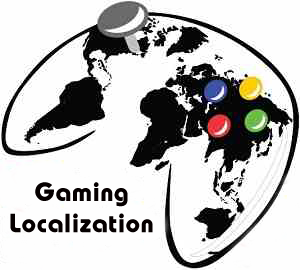Top Tips for Gaming Translation and Localization
As I was born in the early 1980’s in Taiwan, playing Nintendo games was one of the most exciting entertainment and social activities with siblings, friends and neighbors. At the time those games were stored on cassettes and most of them were labeled in Japanese only. When we went to buy or exchange the cassettes, we had to guess by the images and the Kanji (Japanese characters) we could recognize on the packaging and determine whether the game would be a fun game or not. After getting the game home, another challenge was to figure out how to play the game with instructions in a foreign language. It w

as time consuming, but of course also very fun. Little did I know that my mother allowing me to play these TV video games would set my career path.
After graduating from college, I passed a translation test including translating a sample and started working as a professional translator. The sample I translated, also my first project, was EverQuest II. It was a big project that required several translators and editors working simultaneously for several months. After I started working as a Localization Project Manager, that particular project also led me to manage multiple web and app based games. I have to say that working on gaming localization was a treat as all the linguistic teams I worked with were usually super excited and enthusiastic about the project and it always brings back fun childhood memories. I can hear Super Mario Brother music playing in my head now ☺.
Here are a few tips that I would like to share about gaming localization and translation:
- Make sure the localization team has access to the game before the translation process starts. It is very beneficial to let the translators play the game and understand the context as well as how to play the game. This will significantly elevate the translation quality. The instructions in the target text will be clearer and easier to understand. I can’t stress enough the importance of having access to the game and time to play the game before the translation process begins. With this exposure to the game completed at the beginning of the project, you avoid wasting a lot of precious time along the way with contextual and other queries.
- Make sure your program/software can display target language(s) properly. If your game is web- based, generally there are no big issues. But if it is an application and you are localizing it into any right-to-left languages, please make sure the program has the feature to import the target language properly, or you may have to go through a lot of cutting and pasting and manual work, not to mention risks mistakes that can happen in the process.
- Testing platform. Is your game designed for all devices and systems, i.e., mobile devices and PC; IOS and Android? Make sure the linguistic testing is completed for all the required environments.
- Social media feed. Note that there are character limitations for social media feeds. As most of non-Asian languages expand in length when translated from English, keep the English source short in preparation for localization.
- Cosmetic/display issues. Gaming localization is similar to software localization in many ways. In the internationalization process, leave room for language expansion and consider double byte languages in order to prevent truncation and other display issues.
- App store text. Remember that it also takes a few days for your App store text to be approved after submission. While the game is being tested, have your translated App store text ready to submit so you can get it going as soon as your app is getting prepped and tested for the global audience.
I hope these tips are helpful when you are preparing to take your games to the international market and make the process and journey with less hassle.
